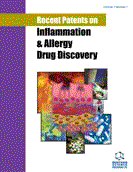Abstract
Background: Recently, methods for mimicking endogenous cortisol rhythms hereby potentially reducing the risk of systemic adverse effects of exogenous corticosteroids have been patented. Methods for sensitive detection of adverse effects on bone turnover of various doses, administration routes and regimens of exogenous corticosteroids have been patented. Urine cross-linked Ntelopeptides of Type I collagen (Ntx) have been established as a sensitive bone resorption marker and urine levels of Ntx have been found to exhibit a distinct diurnal rhythm.
Objective: To assess whether the timing of administration of prednisolone affects the diurnal rhythm of Ntx in urine.
Methods: Four girls and four boys aged 10.6 to 15.8 (mean 13.2) years with normal weight and height and pubertal stages I-IV were studied in an open randomized 2-periods cross-over trial, with a 1-day run in, and two 4-day periods of 5mg prednisolone in the morning and in the evening, respectively, separated by a 3-week washout period. At run in and on the last day of each treatment period, the first sample of urine was collected from 24.00 to 08.00h in the morning of the day of investigation. Thereafter, urine was collected in 4~hour intervals until 24.00 and in another 08.00h interval from 24.00 to 08.00h.
Results: Compared to run in and morning prednisolone treatment urine Ntx levels were suppressed from 24.00 to 8.00h during treatment with prednisolone in the evening (P < 0.01 for both comparisons) and no statistically significant circadian rhythm was observed. During morning prednisolone treatment Ntx trough and peak levels occurred from 16.00 to 20.00 and 24.00 to 08.00h, respectively, and the Ntx levels were significantly reduced from 12.00 to 20.00h as compared to run in (P < 0.005) and prednisolone treatment in the evening (P < 0.01).
Conclusions: Depending on the time of administration, prednisolone interferes with diurnal rhythms in urine Ntx.
Keywords: Administration regimen, bone resorption, bone turnover, children, diurnal rhythms, glucocorticoids, Ntx, Prednisolone.
 80
80 1
1


















